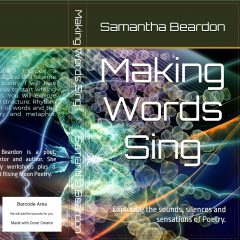Literary devices/Poetic devices/Figurative Language
Common literary devices, such as metaphors and similes, are the building blocks of literature, and what make literature so enchanting. Language evolves through the literary devices in poetry and prose; the different types of figurative language make literature spark in different ways.
Yet these devices are techniques we use in our normal speech as well as in our writing. We don’t just use metaphors when we write or when we read they are a dynamic part of our everyday communication. Indeed that is why it many metaphors are seen as cliché they are used so frequently they no longer have the surprise element that we as writers want to interject into our writing.
The common metaphor is alive and well and you use them continuously when you speak. Metaphors are methods of comparison,symbolism or description.
‘She is the apple of his eye’,’he broke my heart’, ‘life is a race’, ‘fit as a fiddle’, ‘old flame’, ‘my room is a prison’. Do you have metaphors that are part of your standard repertoire? They will be so much part of your normal speech pattern you are probably unaware you use them they are hot wired in your psyche.
How often do you personify inanimate objects? Giving human characteristics to non human Our car is a she, my husband refers to ships as she, I have been known to have a conversation with my laptop and a teddybear amongst other things. I frequently ask my laptop how it wants me to do something when it rejects all my moves. I accuse the rain of waiting till I am outside to deliberately soak me. The cookie called to me, the sun came late, the frost came with icy fingers, the flowers danced in the breeze. Again it’s a part of how we interact with the world.
Think of the symbols you use in your daily communication. ‘The heart’ symbolic of love or lost love, wedding rings symbolise joining together, chains can mean being imprisoned or held back, ladders can symbolise ascent to better things, clocks can represent deadlines, time passing, owls might represent wisdom or sometimes foreshadowing.
If you really analyse conversations, or every day writing you will find you are using the devices we refer to as literary or poetic devices all the time. We are not as writers coming to them as new concepts. Yet at the beginning of this article I said they are the building blocks of literature .
Why call these devices specifically literary/Poetic devices?
If we use them all the time in our lives why do we highlight these devices as being important in literature?
Its because writers/poets take these devices and use them meaningfully. We understand the theory of their construction and we use them mindfully to enhance our poetry and prose.
Literary devices refer to devices or manoeuvres writers use in their writing to relay information and develop the narrative, i.e., to make his or her work complete, interesting or complex. In other words, it is a “literary or linguistic technique that produces a specific effect, esp. a figure of speech, narrative style, or plot mechanism”. There are hundreds of literary devices but some are more commonly used than others. Some are used equally in prose and poetry and some will appear more often in one form of literature rather than another.
There is much overlap in how literary devices are categorised and you will see the categories of devices being used slightly differently in different books and articles, this doesn’t take away from the fact that we use all such devices mindfully in our writing and it’s how we use them that is important.
For instance you can consider that form is a poetic device such as Free Verse or Sonnet. Devices of Sound and Rhythm are poetic devices such as alliteration or consonance.
Literary/poetic devices refer to a broad category of techniques referring to literary or linguistic techniques in a work of literature that produces a specific effect. Whilst, figures of speech are also seen as a type of these literary device. This is the primary difference between literary devices and figures of speech.
Figures of speech are forms of expression where words are used out of their literal meaning or out of their ordinary use. Figures of speech often offer emphasis, the freshness of expression, or clarity to a work of literature. Furthermore, their main aim is to use the language creatively to heighten the effect of what is being said. There are many types of figures of speech.
Some Examples of Figures of Speech
• Similes – making a direct comparison between two things
• Metaphors – making an implicit comparison between two unrelated things
• Personification diving human characteristics to non human entities.
• Synecdoche – using a word or phrase that refers to a part of something to represent the whole or vice versa.
• Oxymoron – using two contrasting words together
• Hyperbole – deliberately using exaggeration for the sake of emphasis
